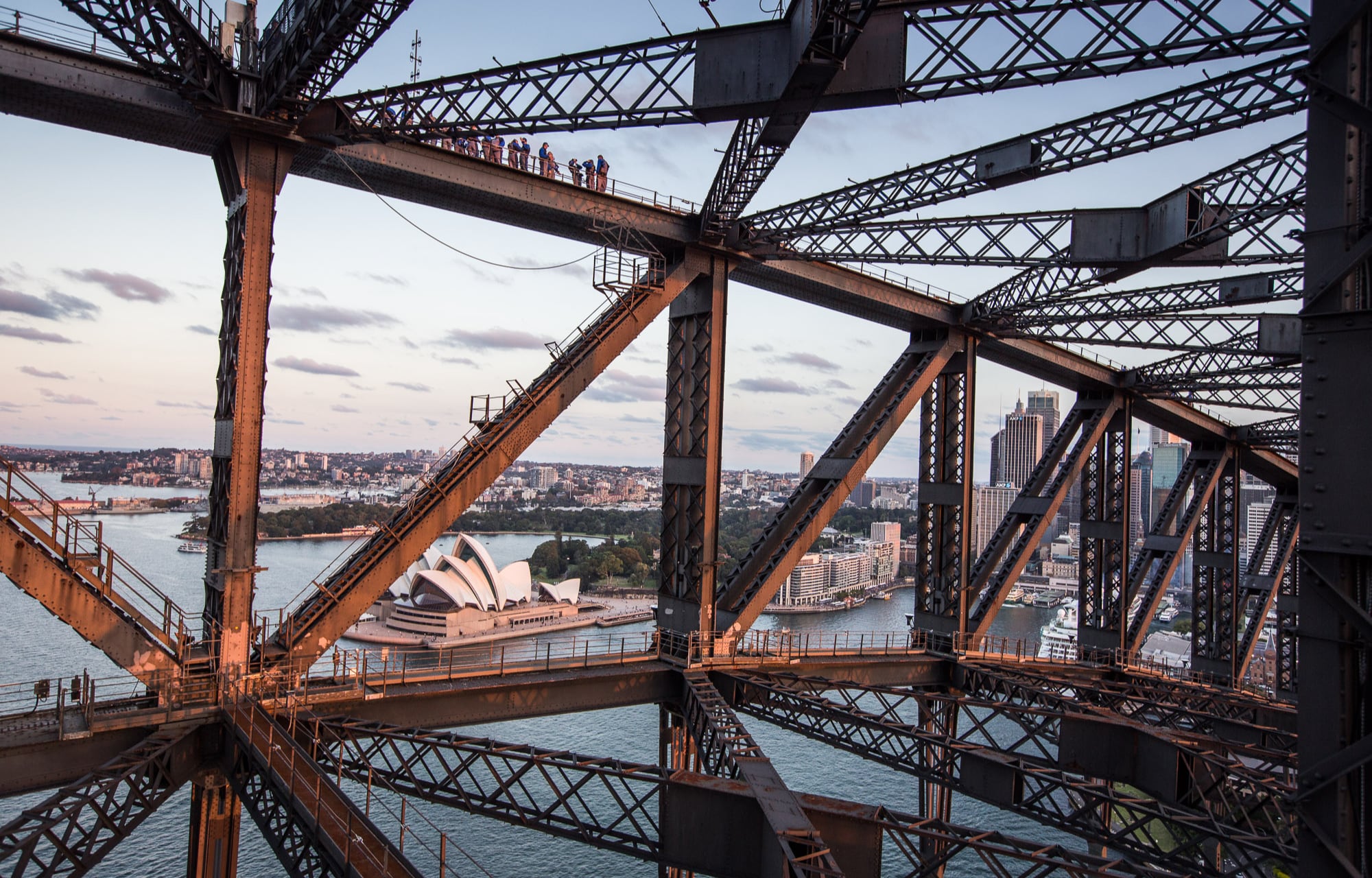Construction
1815 is the earliest known date for proposals to build a bridge between the northern and southern shores of Sydney Harbour, though it wasn’t until after the First World War that the idea was taken more seriously, when Dr JJC Bradfield presented his design to the New South Wales Government.
After inviting worldwide tenders for the construction, the contract to build the Sydney Harbour Bridge was officially awarded to English company Dorman Long and Co Pty. Ltd.
Dr J.J.C. Bradfield’s design of the arch and pylons was closely based on New York’s Hell Gate Bridge. In terms of steel arch spans, the Sydney Harbour Bridge ranks fifth in the world. However, its reputation as the ‘World’s Greatest Steel Arch’, rests on its combination of span, width and load bearing capacity, as well as the difficulties that needed to be overcome during its construction.
Construction of the Sydney Harbour Bridge began on 28 July 1923, employing 1,400 workers and taking over eight years to build, at a cost of more than £10 million.
Approximately six million hand driven rivets and 52,800 tonnes of steel (or 550,000 pieces of individual pieces of steel!) were used to complete the construction, and 272,000 litres of paint were required to give the Bridge its initial three coats ahead of the official opening day on 19 March, 1932.
The Sydney Harbour Bridge now carries eight lanes of traffic and two rail lines, with more than 200,000 vehicles crossing the road deck each day.




